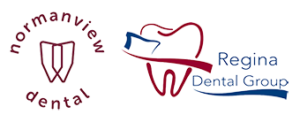Tooth Decay: Causes, Symptoms, and Prevention
Tooth decay, or cavities, is among the most common oral health problems in the world. They are particularly common in small children and older adults, but anyone who has teeth is susceptible to getting cavities or battling tooth decay.
Tooth decay is the destruction of the tooth structure. It can affect the enamel – the outer coating on the tooth, and dentin – the dense, bony tissue below the enamel. Dentin makes up the bulk of the tooth, so if that area becomes affected, it is much harder to treat.
Although preventable, tooth decay happens because of plaque buildup. Food that contain carbohydrates – bread, cereal, milk, candy, soda, or fruits – leave residue in your mouth after eating. The bacteria in your mouth reacts with that residue and turns to acid. This acid, along with bacteria, food debris, and saliva, create plaque. The acids in plaque eat away at the tooth’s enamel, creating holes in the teeth called cavities.
Causes of Tooth Decay
There are many causes for tooth decay, but fortunately, many of them are preventable. Main causes of tooth decay are sticky, sugary foods and drinks. Sugar produces more acid, which leads to decay. Plaque combined, with sugar, weakens the enamel on your teeth, making them more likely to suffer from decay.There are other causes of tooth decay to be aware of:
- Inadequate Brushing: Your teeth are susceptible to plaque for 20 minutes after eating. If you don’t brush soon enough after eating or drinking, there is a greater risk for early signs of decay. Also, not brushing with proper techniques or frequency allows for plaque build up.
- Dry Mouth: Saliva helps wash away food debris and residue, which in turn, helps prevent plaque from forming. If you have very little saliva, plaque can build up more quickly.
- Eating and Drinking: Unavoidable as it is, eating and drinking play a significant role in the formation of cavities. When you eat and drink, carbohydrates remain on your teeth until you brush.
- Bacteria & Acid: The naturally occurring bacteria in the mouth combines with residual carbohydrates to create acid.
- Eating Disorders: Eating disorders contribute to tooth decay when teeth are exposed to acid from the stomach. Bulimia increases the risk to decay or a cavity due to frequent vomiting.
- Medical Issues: Some medical treatments, such as chemotherapy or other cancer treatments that expose the body to radiation promote tooth decay by changing the genetic and hormonal makeup of saliva. This change increases bacterial growth.
- Nighttime Infant Feedings: Formula, milk, juice, or other liquids containing sugar remain on baby’s and kid’s teeth for hours while they sleep. This “feeds” decay-causing bacteria. This is called “baby bottle tooth decay” and similar damage occurs when toddlers drink the same liquids out of sippy cups throughout the day.
Signs and Symptoms of Tooth Decay
Depending on the severity and location of the tooth decay, the symptoms and signs can vary. However, during the very early stages of cavity and tooth decay, there may not be symptoms at all. As the decay gets larger, some of symptoms and signs may be visible, such as:
- Toothaches – sharp, spontaneous pain
- Tooth sensitivity
- Pain when eating something sweet, hot, or cold
- Visible holes or pits in your teeth
- Staining on the surface of your teeth
- Pain when chewing or biting into food
Because it is not always apparent when there is a cavity forming, it’s important to have regular dentist checks and cleanings. If you experience pain, see a dentist as soon as possible.
Prevention Tips
Practicing good oral and dental hygiene can help prevent tooth decay and the formation of cavities. Always consult with your dentist, but some options are:
- Brush your teeth at least twice a day with fluoride-based toothpaste. It’s best to brush after each meal and before bedtime. Use floss or an interdental cleaner to get food residue out from between your teeth between meals.
- Avoid snacking between meals. Snacking throughout the day puts your teeth under constant attack. There is no break between meals for the saliva to wash away food debris and assist in cleaning your teeth.
- Eat a nutritious and well-balanced diet and avoid foods that are heavy in carbohydrates. Foods such as fresh fruits and vegetables promote saliva production and unsweetened beverages help wash away food debris and residue.
- Drink tap water because most public water supplies contain fluoride. If you only drink bottled water, you miss out on the benefits that fluoride has for preventing tooth decay.
- Rinse at least once a day with mouthwash that contains fluoride. Mouthwashes also have antiseptics that kill plaque-causing bacteria.
- Dental sealants – a protective, plastic coating that go on your molars – seals off grooves and cracks where food can get stuck. This prevents tooth enamel from plaque and acid.
Visiting your dentist is the best way to prevent tooth decay and cavities from forming in your mouth. Being aware of your diet, brushing more frequently, and knowing how cavities are formed are the best ways to actively prevent oral conditions. Call your dentist today to schedule an appointment.
If you would like to learn more, please do not hesitate to give us a call or contact us to book an appointment.
